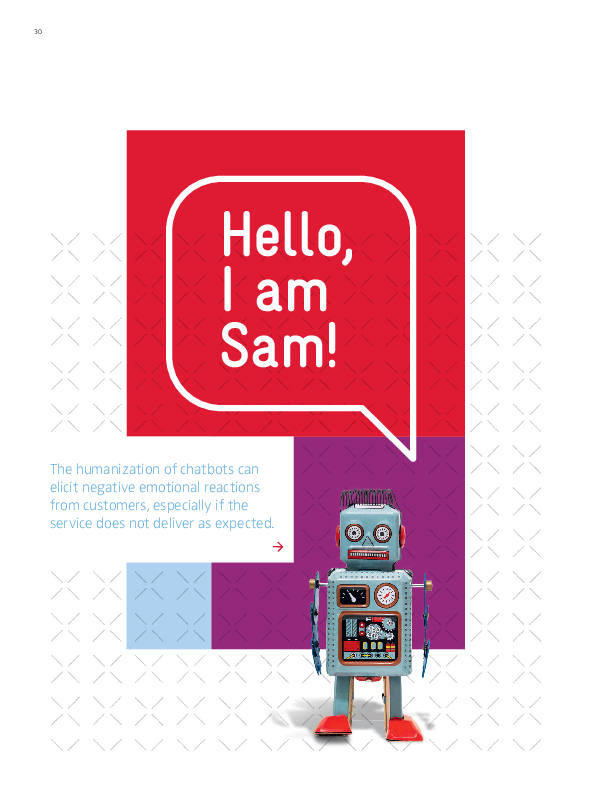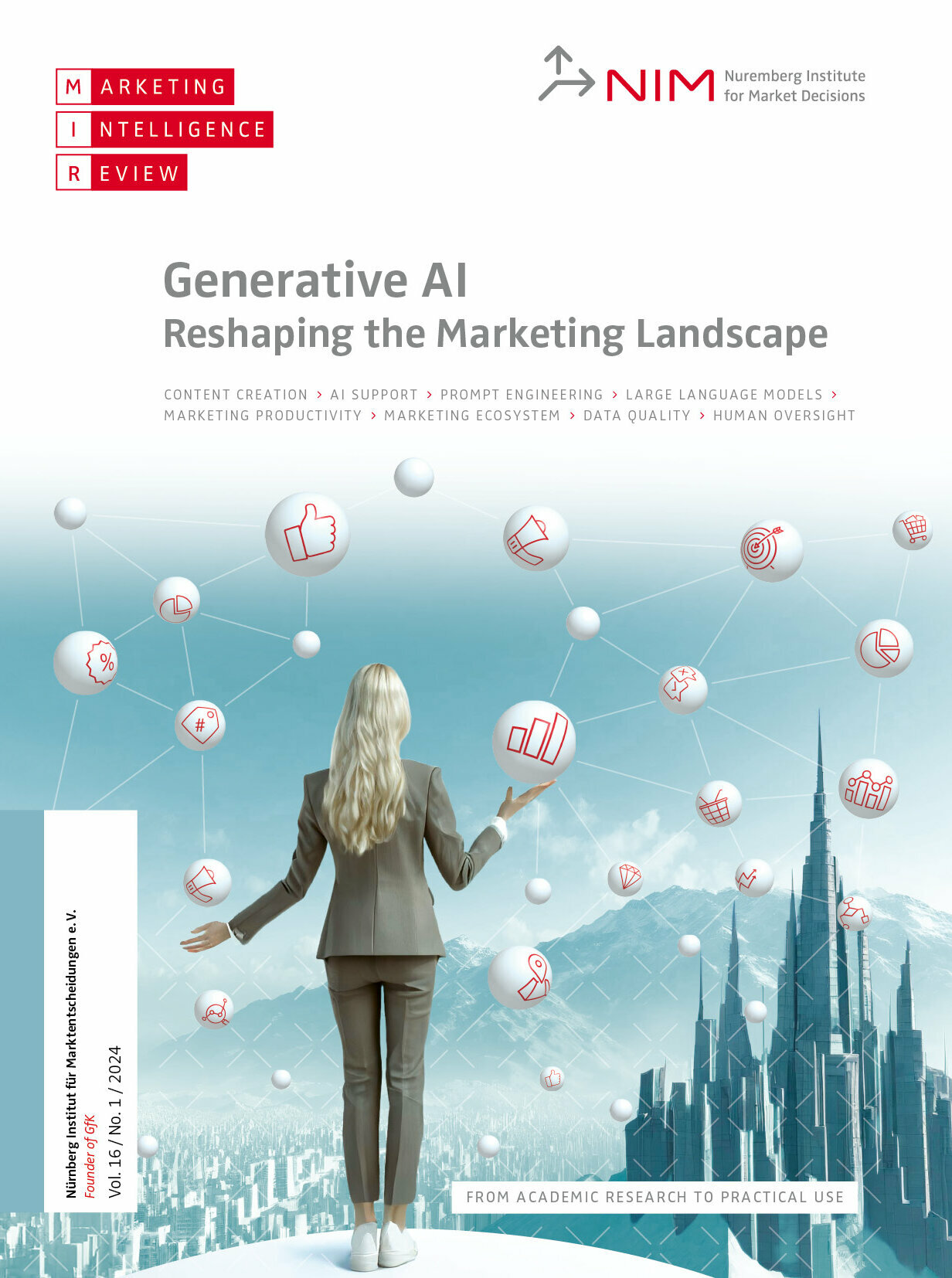When Humanizing Customer Service Chatbots Might Backfire
Rhonda Hadi
More and more companies are using chatbots in customer service. Customers interact with a machine instead of with a human employee. Many companies give these chatbots human traits through names, human-like appearances, a human voice, or even character descriptions. Intuitively, such a humanization strategy seems to be a good idea.
Studies show, however, that the humanization of chatbots is perceived in a nuanced way and can also backfire. Especially in the context of customer complaints, human-like chatbots can intensify the negative reactions of angry customers because their performance is judged more critically than that of non-humanized chatbot variants. Service managers should therefore consider very carefully whether, and in which situations, they should use humanized service chatbots.

![[Translate to English:] [Translate to English:]](/fileadmin/_processed_/e/e/csm_hildebrand_intro_ai_vol_11_no_2_de_1e0479d1e9.png)
![[Translate to English:] [Translate to English:]](/fileadmin/_processed_/3/7/csm_2019_nim_mir_ai_de_res__Kapitel_1__2fa844ec2e.png)
![[Translate to English:] [Translate to English:]](/fileadmin/_processed_/f/1/csm_2019_nim_mir_ai_de_res__Kapitel_2__52310f2f29.png)
![[Translate to English:] [Translate to English:]](/fileadmin/_processed_/4/d/csm_2019_nim_mir_ai_de_res__Kapitel_4__c125a66154.png)
![[Translate to English:] [Translate to English:]](/fileadmin/_processed_/d/5/csm_2019_nim_mir_ai_de_res__Kapitel_5__5621369382.png)
![[Translate to English:] [Translate to English:]](/fileadmin/_processed_/8/4/csm_taylor_ai_vol_11_no_2_eng_6d2c64d841.png)
![[Translate to English:] [Translate to English:]](/fileadmin/_processed_/c/2/csm_2019_nim_mir_ai_de_res__Kapitel_6__ce9e09e186.png)


